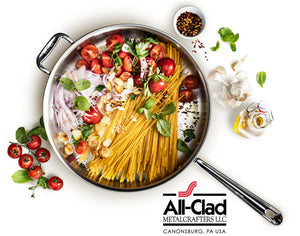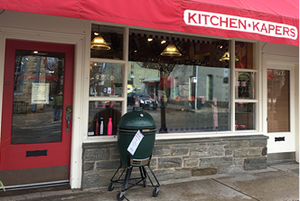- Introduction
- Immersion Blenders
- Personal and Smoothie Blenders
- All-Purpose Countertop Blenders
- Heavy Duty Blenders
- Multifunction Blenders
The blender was first introduced at the Chicago National Restaurant Show in 1937, and the appliance quickly became a kitchen staple that home cooks and professional chefs turned to regularly for velvety purees and smooth sauces. From the beginning, blenders proved that kitchen appliances could improve the quality of life (and quality of cooking) for the average home cook. Today our affinity for the blender has not changed but the foods we eat have, and manufacturers have responded with new and diverse designs that offer new conveniences and powerful new capabilities.
Driven by the healthy trend of nutritious "smoothies" or "whole foods juicing" as well as the ever-more sophisticated repertoire of home cooks, the blender market now enjoys a wider selection of available sizes. There are compact smoothie specialists and personal blenders with 26 oz. jars, super-powerful heavy duty blenders with 68 oz. jars, and many sizes in between. Even blender jars, blades, lids and accessories have advanced, namely with the Eastman Company's new "Tritan" plastic jar. Tritan jars are extremely durable, lightweight and have glass-like clarity. They are also conveniently marked with measurements in metric and imperial along the sides. The design of jars is also a huge factor on how effectively a blender can crush ice. Rounder and more open shapes can promote better movement of ice with even rotation towards blades. This results in evenly crushed ice and evenly chopped foods. And since blenders are usually kept out on the countertop, most manufacturers do their best to create designs that are attractive as well as functional. With a variety of colors and finishes, including stainless steel, there's a fair chance of finding one that will work with your surrounding appliances. Since you'll be seeing it every day (and particularly noticing it if it clashes!) appearance really does matter, so find one that you can cook with and live with. But, as an option, there are even immersion blenders that you can stash in a drawer instead of on the countertop!
So which options are best for you? That depends on what you want to do with your blender. Consider how you will use it... Are you looking for a standard workhorse? Is ice crushing ability a large factor? Are you a serious cook looking for options that you didn't even know existed? Or are you just really into smoothies? Knowing your needs is the first step towards a satisfying purchase. Read on to gain a better understanding of each category.
Back to top
Immersion Blenders
Also called a "stick-blender" or "handheld blender", the immersion blender is a highly convenient appliance that comes directly from professional kitchens. The appliance can be corded or cordless and has a handle/ motor housing on top which leads to a shaft with spinning blades at the bottom. You simply submerge the blades into whatever you want to blend, and push the button on the handle to begin. Immersion blenders are great for pureeing or blending small batches of food right in the bowl or pot you are using without the need to transfer your food to the countertop blender. To clean, the shaft with blades detaches for washing and the handle/ motor housing can be wiped off if needed. The immersion blender often comes with various chopping accessories which can really increase the functionality of this go-to prep tool. Handheld blenders are very convenient and perfect for most small tasks, and they can store in a cabinet or drawer. But their compact size greatly limits their power so they tend to complement a countertop blender rather than replace one.
Immersion blenders are good for mixing soft fruit smoothies (although they are generally not effective at crushing ice cubes), milkshakes, and powdered drinks. They are ideal for processing soups and sauces right in the pot, blending vinaigrettes, marinades and emulsion sauces.
Back to top
Personal and Smoothie Blenders
This is a more recent development of small-sized blenders that was largely fueled by the popularity of blended fruit smoothies. Smoothie blenders are simple and slender units with smaller 14-24 oz. blending jars that often double as drinking or travel mugs. Because smoothies can be made from soft ingredients, smoothie blenders really don't have to be very powerful. 200 to 400 watts is sufficient but for good integration of crushed ice, 350 watts or more is recommended. Personal blenders are similar in size and power but with larger jars (32 oz. is common) and are only slightly more oriented for all-purpose use, though many keep close to their smoothie roots by offering drinking jar accessories. There are also a few high quality personal blenders with power that rivals all-purpose blenders. But the machine bases are somewhat larger than typical personal or smoothie blenders and you can expect them to cost more as well.
Smoothie blenders are best used for soft or cooked fruits, liquids and yogurts only; ice crushing abilities will vary with power. Personal blenders are slightly more suitable for general use or bar use, though the smaller blending jar size may be limiting. But they are an ideal and cost effective solution when cooking for fewer people or where space is limited.
Back to top
All-Purpose Countertop Blenders
This category includes the mid-range in power, size and cost and models in this group are very effective at pureeing, grinding and chopping a wide variety of cooked and raw vegetables. Power will range from about 500-800 watts and the jar size is typically 48 oz. They easily have enough power to crush ice as long as the jar shape is appropriate. Blenders that are narrow at the base and clover or square-shaped sometimes only pulverize the ice at the bottom of the jar and will not circulate the contents well (unless liquids are also added to the jar) even if the motor is up to the task. Controls in this category vary from brand to brand, but better producers have settled on touch-pad controls that are seamless and easy to wipe clean. Expect between 3 to 12 preset blade speeds, although higher-end models also offer variable speed options for more control. If the average 8" x 9" footprint is not a problem and your blending needs aren't too demanding, a machine of this size and power will be fine for most households. As this category is the original and still the standard, it includes the greatest number of models and design choices.
Use it for milkshakes, smoothies and frozen drinks; chopping and grinding nuts, salsa, pesto, hummus, vegetables; blending and combining liquids, marinades, vinaigrettes; and pureeing fruits, baby foods, soups, cooked and soft vegetables. Many all-purpose blenders can produce "green" smoothies from hard and fibrous vegetables, but few can do it well, often resulting in smoothies that are anything but smooth.
Back to top
Heavy Duty Blenders
Powerful motors, along with highly engineered blade assemblies, roomy jars and other accessories combine to create this segment of "super blenders" with impressive abilities. Heavy duty blenders operate on 1000-1500 watts and achieve a much higher blade speed to quickly pulverize and liquefy a very wide assortment of foods. This segment was largely popularized by the Vitamix company and has long been used in commercial settings for volume food and frozen drink production. Heavy duty blenders excel at everything the all-purpose blenders can do, and also do several things that smaller blenders cannot. This includes crushing ice into quick frozen desserts, quickly smoothing nuts into butter, milling grains into flour and shredding meats. They have the power to liquefy most any combination of vegetables into green smoothies that are smooth. Heavy duty blenders will typically include high-quality and larger volume jars (about 64 oz.), added features and settings, vented lids and accessories. Many feature "clean" settings that help spin food particles from under the blade assemblies.
Heavy Duty blenders are not only excellent for any traditional blending job, but their increased capabilities are expanding the definition of what a blender can do. These appliances are often taller than all purpose machines and the larger jars can be less than ideal for processing small quantities of foods. Quality heavy duty blenders cost significantly more than typical blenders, so the quality should be backed with a good warranty. These machines are more about performance than design, but there are limited color options on some models.
Back to top
Multifunction Blenders
Certain models offer much more than the standard variety in terms of function. These units can replace several appliances in a kitchen and can be a worthwhile investment. Some models have accessories for chopping or processing, using the same base unit. A couple models can even cook soup and vegetables directly in the blending jar before processing, juicing or a multitude of other functions. Expect multi-function blenders to be most similar in size to the all-purpose blenders and limited in color choices.
Back to top



